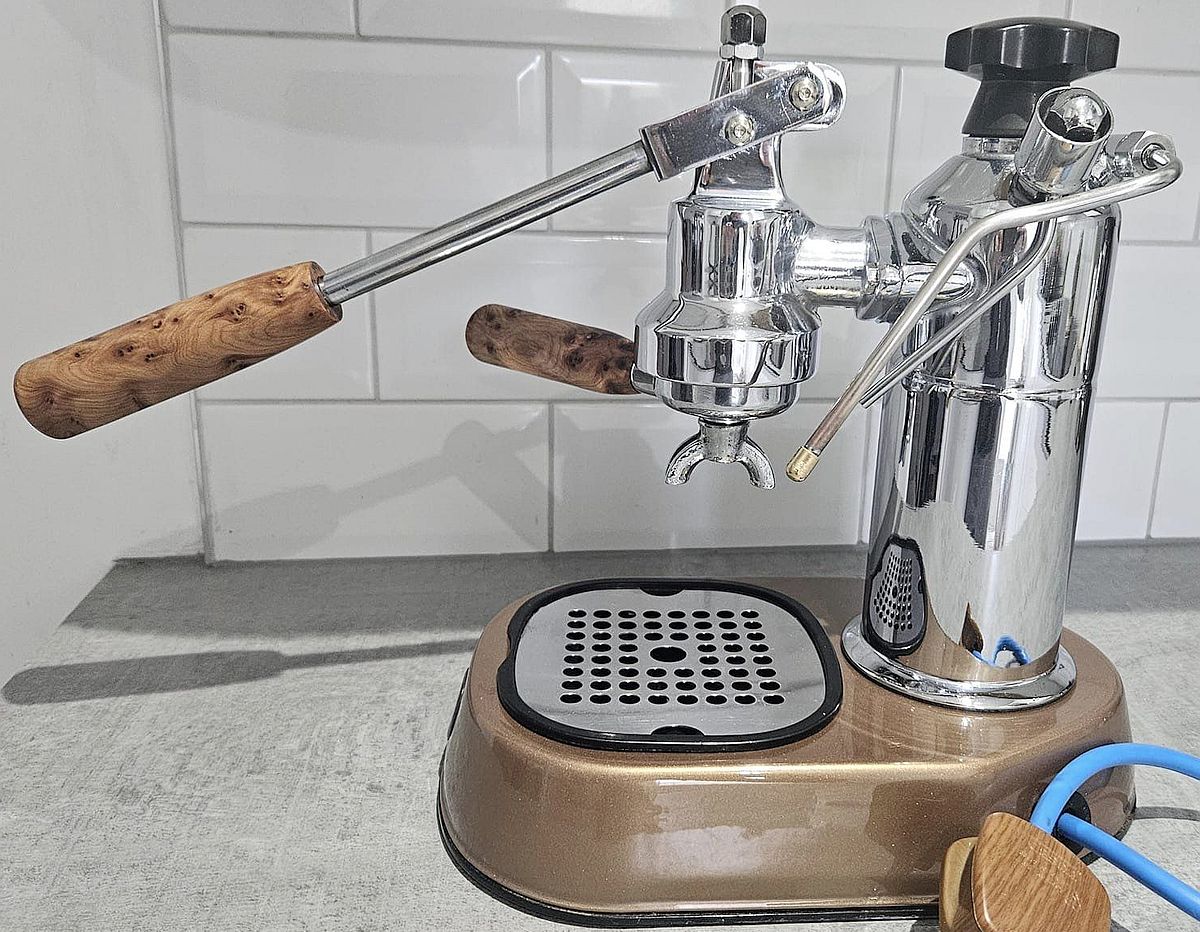Manual espresso machines are probably the most underrated brewers. They are great alternatives for pulling a shot for many reasons. The most important reason is the low tech design, with no electrical parts. They can be used anywhere, even in remote areas where there is no electricity. Well, some of them might need electricity, you'll see why.
The object of this article is to introduce you to the world of manual espresso making, and the various types of manual espresso machines. We aim to show you why enthusiasts prefer them, and how they could benefit you. This article is not a review, but we link to review articles.
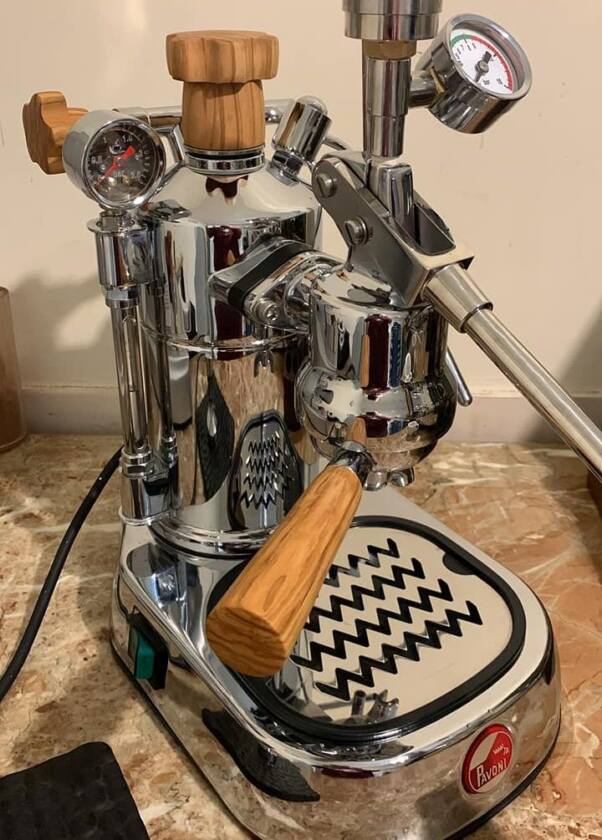
Table of Contents
An Introduction to Manual Espresso Machines
The manual espresso machine is as old as espresso. The history of espresso starts with manual machines. The semi-automatic only appeared in the late 1930s. The semiautomatic espresso machine revolutionized the industry, allowing more consistency from shot to shot. Suddenly, skills were not as important as they were before.
However, the lever espresso machine came back on the coffee scene in the modern days. The major selling point was the great control over the brewing process. The barista has control over all of the aspects of the brewing process, including the pressure. This is only possible with an manual espresso machine.
However, it is important to note that this control comes at a high price: inconsistency. You can ruin your shot very easily. The barista has to master the technique, in order to get consistent shots. But we'll get back to this later in the article.
Lever operated machines were the precursor of the semi-automatic espresso maker, as we know it today. Without the invention of the lever operated espresso machine, we wouldn't be able to “pull a shot” today. That's right, the espresso term of pulling a shot was coined during the times when brewing espresso was done by pulling the espresso machine lever. The term stuck so baristas are still using it today.
Lever espresso machines are more temperamental, since the pressure is controlled manually. A little hand hesitation and your shot is ruined. On the other hand, if you master the art of handling the lever, you can pull amazing shots.
Manual espresso machines are often perceived as relics. The general perception is that only coffee snobs use them to show off. This is only partially true. Yes, it's quite difficult to use a hand espresso maker, and lots of shots have been ruined with manual machines. But espresso enthusiasts love them because it allows pressure profiling, and gives them an unfair advantage in their quest of getting the “God shot”.
But the lever machine is not the only manual espresso maker. A relatively recent innovation was the hand pump espresso machine. While the hand operated espresso maker is not as powerful as the lever machine, it is very portable, catering to its own audience.
Often times people call semi-automatic espresso machines – manuals. This can bring a little confusion, since semiautomatics are While compared to a super-automatic, there is a lot of work to be done by the barista, a semi-auto is a long way from a fully manual machine.
Portable or Hobbyist? Different Manual Espresso Machines
I briefly mentioned the two types of manual espresso makers, but it's really hard to classify devices in this espresso maker category. However, here is an attempt.
Portable Manual Espresso Machines

This category includes portable or travel-friendly devices. The most commonly used are hand pump espresso makers. The hand pump espresso maker is a coffee maker that uses a hand pump to compress the air in the brew chamber. The operator can create a considerable amount of pressure, enough for the result to qualify as an espresso shot.
The hand pump espresso makers are small, convenient, and they are not expensive. They do require a considerable expertise and skill level to pull great shots, and the learning curve is steeper than for other manual machines.
Popular hand pump espresso makers include Wacaco, Handpresso, and Staresso.
There are small lever operated espresso makers, which can be included in this category. The most popular are Flair and ROK.
Hobbyist Manual Espresso Machines
I call them hobbyist, because they require a lot of attention, time and dedication to operate. Most of these machines pull amazing shots, in the hands of the trained barista. However, the owner of such a machine is in for serious commitment. From training, experimenting, to the occasional ruined shot, and just the added manual work, compared to a semiautomatic.
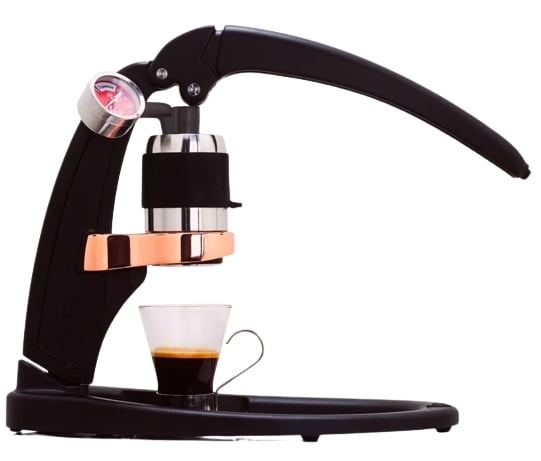
It goes without saying that for the manual espresso machine owner, pulling a shot it is a moment of relaxation. What most of us perceive as inconvenience, they see as ritual. What we see as time lost, they see as relaxation time.
The lever espresso machine is the traditional type. The barista manually operates the lever, which in turn creates the necessary pressure to extract the coffee. The operator needs physical strength to pull the lever down to create the pressure.
There are two types of lever operated espresso machines:
Direct Lever Machines: the user directly controls the pressure and water flow through the coffee grounds by physically pulling the lever. This type allows for a high degree of control over the brewing process but requires practice and physical effort.
- Imagine a machine where you pull down a lever (like pulling down the handle of a slot machine in a casino).
- Inside, there's a spring that gets compressed (squeezed tightly) when you pull the lever down.
- When you let go, the spring pushes back to its original shape. This action forces water through the coffee at high pressure.
- The spring is what's doing most of the work to create the pressure, so you don't need to use a lot of muscle.
- This kind of machine helps make each shot of espresso consistent because the spring controls the pressure.
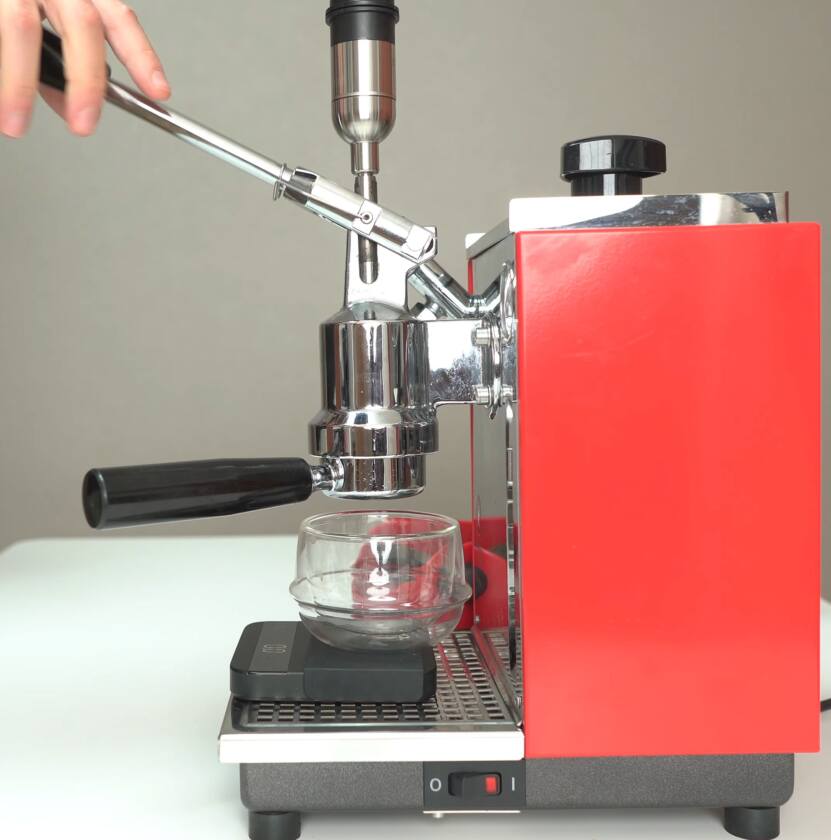
Spring Piston Lever Machines: these are a slightly more automated version of the lever machine. The user still operates a lever, but the pressure is generated by a spring mechanism. When the lever is pulled down, it compresses a spring, which then provides the force needed for extraction when the lever is released.
- This machine also has a lever, but there's no spring to help you.
- When you pull the lever down, you're directly pushing the water through the coffee with your own strength.
- The amount of pressure depends on how hard you push the lever.
- It's like using a manual pump to inflate a bicycle tire – the harder you pump, the more air gets pushed into the tire.
- This machine gives you more control over the brewing process, but it also requires more practice and strength to get a consistent shot of espresso.
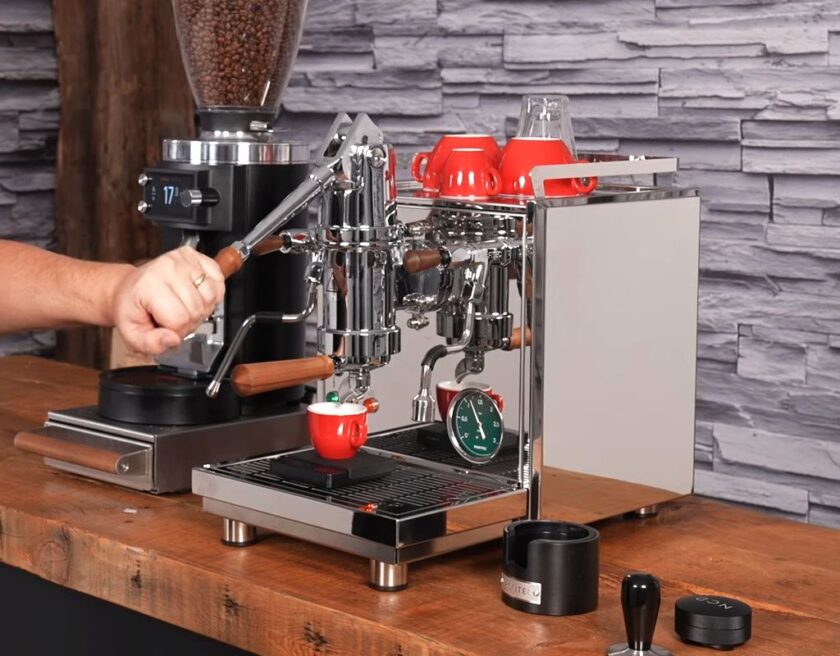
At the end of the day, the biggest difference between the two is that a spring piston lever machine uses a spring to help create pressure, making it easier to use and more consistent. A direct lever machine relies entirely on your strength and skill, offering more control but requiring more effort and practice.
More Classifications – How Manual Is Your Espresso Maker?
What do you need your manual espresso maker for? is it for travel? Is it to pull amazing shots where all aspects of the extraction are under your control? Is it because they are more reliable than their automated counterparts? Is it the aesthetic appeal? Or is it the ritual of actually – pulling – an espresso shot. Some manual espresso makers are very portable, but most of them are not portable at all.
You can go fully manual, with a device that creates pressure by operating a small pump that looks very similar to a bicycle pump. With this device, you dump your grinds into the brewer, pour some hot water and pump to make enough pressure to pull the shot. You can create more than the 9 bar needed for an espresso. Once the pressure is created, you press a button to pull the shot.
The advantage of these devices is the small footprint and portability. You can take these with you anywhere, and brew a coffee. The disadvantage is the lack of consistency. You can pull great shots, but also you can fail some. The learning curve is somewhat steep. But if you are a die-hard espresso fan, you will love this on your next trip. These devices are also called hand pump espresso makers, and their major feature is portability.
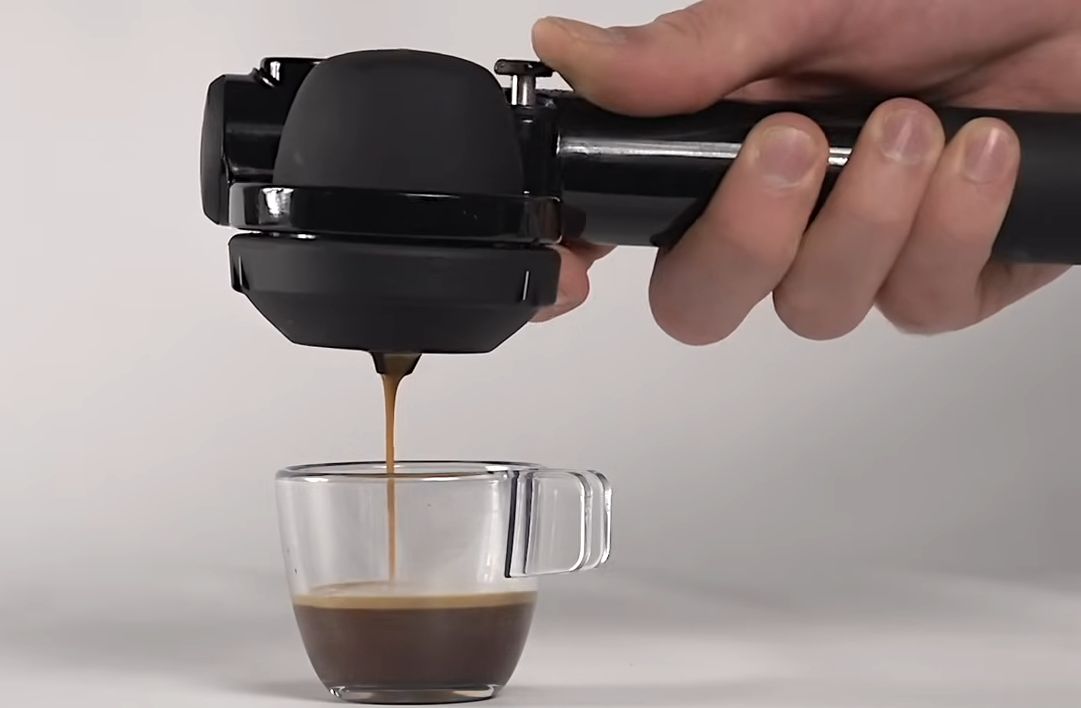
Manual Espresso Machine – Handpresso WILD
Are you an espresso addicted and cannot live without your daily shot? Or maybe you want to impress your friends with an espresso on your hiking trip… It is perfectly possible with the Handpresso WILD, a portable manual espresso device, easy to carry everywhere, no electricity required and extremely easy to use. The manual espresso machine uses coffee pods, which makes it even more easy to use, makes no mess, and deliver a great espresso. Watch the video below to see it in action.
There are also lever operated espresso makers that don't need electricity. You just add hot water and operate the lever(s). These two types are fully manual, and they don't need any electricity. They are portable, but they are larger than the pump operated ones.The advantage is that you can control the pressure better. When you fully trained your hand to pull a shot with these manual espresso makers, you can get awesome shots. You only need hot water.
These devices give you more consistency and better control over the brewing process. This manual espresso press is great in remote areas without electricity. The disadvantage is the steep learning curve. You will pull a lot of average and underwhelming shots until you will consistently pull awesome espressos. You can pull shots head to head without having to wait in between.
ROK Presso Manual Espresso Maker
This is a fully manual espresso machine, that doesn't need any electricity. It only needs hot water. The biggest advantage of a machine like this is that allows to fully customize your shot. The pressure is manually controlled, and this allows for a low pressure at the beginning, and higher pressure at the end of the extraction, which will improve your shots dramatically.
Another option is the hybrid, lever operated machine, with manually created pressure, but with water heated electrically. The advantage of such a machine is the convenience of having the water heated up within the machine. This machine has an electrical boiler that heats up the water, instead of you having to heat it separately, and then pour it into the brewer.
These machines don't have a thermostat to control the temperature in the boiler. They overheat after the first few shots, and this means you have to wait 20 to 30 minutes until the boiler cools down. These machines are ideal for pressure profiling since some of them include a pressure gauge.
These are, in my opinion, the best option to play with pressure profiling, as discussed in this awesome thread at Home-Barista.com.
For the espresso enthusiast who aims perfection, and likes to play with coffee, this is the perfect machine. The disadvantage is that this type of machine has a steep learning curve, and you can't pull more than a few shots, and you need to let it cool off.
Jim Hoffman explains in his post about pressure profiling why lever espresso machines work so well and are able to pull “distinctive and delicious espressos”. He attributes this to the low-pressure-high-pressure-low-pressure profile specific to spring piston lever machines.
